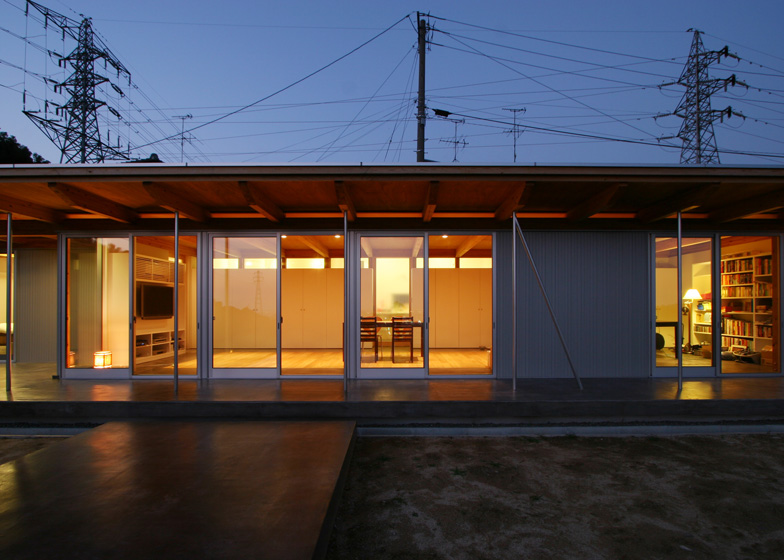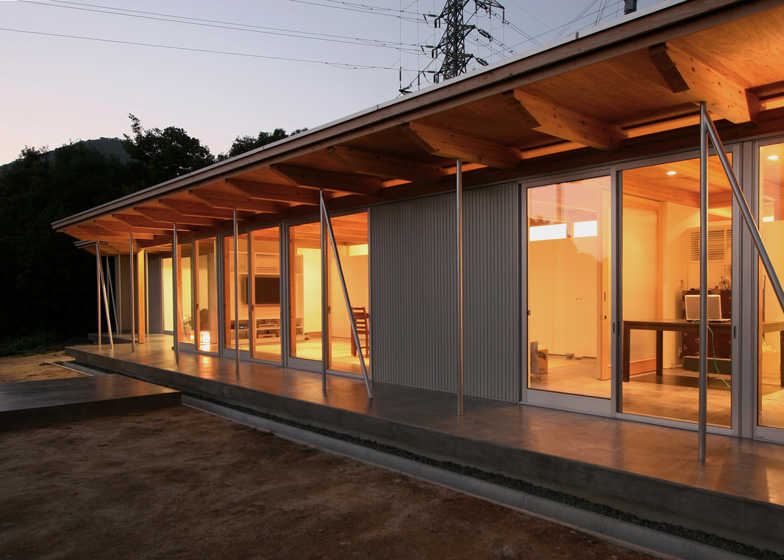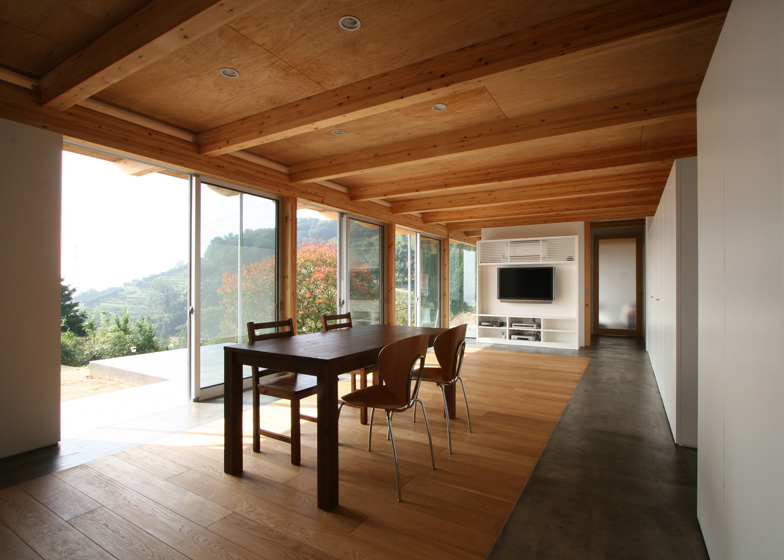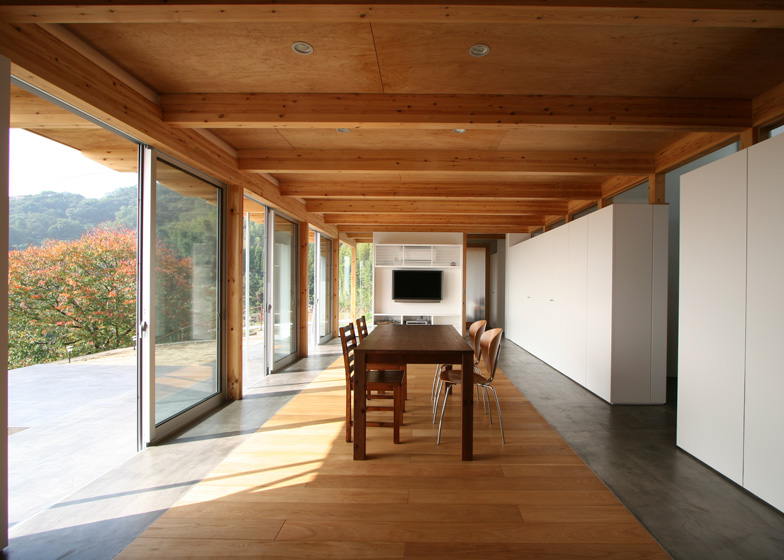Despite being surrounded by electricity pylons, this hillside cabin in Japan by San Francisco firm Anderson Anderson Architecture generates all its own energy and heating using photovoltaic panels and a ground-sourced heat pump (+ slideshow).
Named B-House, the single-storey building is positioned on a slope overlooking Kumamoto, so Anderson Anderson added a wall of glazing to the rear facade that gives residents a view out across the city from the living room, study and bedroom.
The house was built on a tight budget and sustainability was key to the design. "The extremely modest budget required a close collaboration of the architects and builder to achieve a high quality, off-site fabricated timber frame construction meeting high sustainability standards," explain the architects.
The edge of the roof is tilted southwards to maximise sunlight to the photovoltaic panels, while integrated channels collect rainwater so that it can be reused.
There is no air conditioning, so when the temperature increases residents can slide open the glazed north-facing walls.
There are only clerestory windows on the southern facade, which allow hot air to escape and prevent the unnecessary heat gain that would occur with larger windows.
The whole house sits on a thick concrete base, while the walls and roof were constructed using locally sourced timber.
The house was completed in 2009, but hasn’t been widely published.
Other sustainable houses we've featured include a pavilion-like house in Germany that generates all its own power, as well as a concept for a house that is entirely self-sufficient.
See more stories about houses in Japan, including a concrete residence with barely any windows.
Photography is by Chris Bush.
Above: floor plan - click to see larger image
Above: section - click to see larger image
Above: south elevation - click to see larger image
Above: west and east elevations - click to see larger image
Above: north elevation - click to see larger image






